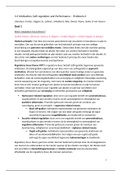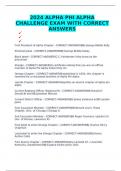Introduction
This report will first explain how the process of distributing goods from different
channels from manufacturer to customer differs between JD Sports and Domino’s
Pizza. It will then investigate the impact of digital technology on the retail and
logistic processes of these businesses and analyse the impact of developments
in this technology on retailing, the supply chain, and stock control. Next, this
report will evaluate the effectiveness of the supply chain and stock control on the
success of Domino’s Pizza. Finally, this report will then evaluate the impact
digital technology has had on the processes of JD Sports.
JD Sports company’s history
JD Sports was founded in 1983 by John Wardle and David Makin and has since
expanded to become the top UK retailer of branded, modern sports and casual
clothing.
JD established its first store in Bury, England, and since then has grown to
include 56 locations around the UK. By 2011, JD had gained control over the
majority of the EU, especially in Germany, Ireland, France, the Netherlands, and
Spain. Denmark and Sweden would soon follow. JD was already known as the
most creative visual merchandiser of sportswear at this point, offering the
greatest and most upscale selection of fashionable items.
Domino’s company history
Tom and James Monaghan established the first "DomiNick's" store in Michigan,
USA, in 1960 which eventually grew to be the first Domino’s store.
The concept of the business was straightforward: deliver hot, freshly prepared
pizzas as quickly and securely as possible while actively participating in the
neighbourhood. Tom made it possible for others to invest in starting their own
business using a little-known model that is now known as franchising.
In 1985, Domino's first location in the UK opened its doors in Luton, Bedfordshire.
There are currently more than 1,200 Domino's restaurants in the UK and Republic
of Ireland, and they distribute more than 106 million pizzas annually.
P4 – Explanation of how the process of distributing goods through
different channels from manufacturer to customer differs
between Domino’s and JD Sports
,JD Sports
JD Sports operates from both a physical store where customers can physically
visit stores, try on items and make purchases in a traditional way and a website
and an app where they can make online purchases.
It follows a traditional retail distribution model, where goods pass through
different stages such as wholesalers, manufacturers, and distributors before they
reach the customers at the end. The majority of their goods are branded items
such as Nike and Adidas, and so they have to source their items from the
manufacturers who manufacture and wholesale these brands.
The JD Sports distribution process, therefore, follows the steps outlined below.
Manufacturer – JD Sports works with various manufacturers and producers of
sports apparel and footwear, and they source these products directly from the
brands and their manufacturers.
Distributor – distributed to JD Sports through wholesalers or authorised
distributors to their warehouses where they then use their internal distribution
processes to distribute stock to stores.
Retailer – stocks these products from wholesalers and distributors in their stores.
They also make the products that they have stored there available to customers
to buy on their e-commerce platform, for example through click-and-collect.
Their online retail operation dispatches directly from warehouses.
Customer – customers visit JD Sports both online and in-store to make purchases.
They can also choose to have items delivered to a certain JD Sports store for
pick-ups and they can also access home delivery online.
Domino’s Pizza
Domino’s Pizza specialises in pizza making and delivery. It follows a unique
distribution model specifically tailored to the food industry. Instead of relying on
external wholesalers or distributors like JD Sports, they have a centralised
system that prepares and supplies the key ingredients to their local stores. As
Domino’s supplies fresh ingredients, they cannot have products sit in
warehouses for long periods of time and therefore rely on a more continuous flow
of stock out to their stores and in from their suppliers (e.g., farmers). This helps
the business remain consistent and flowing and is designed to help minimise
food waste. Within the stores, each branch has its own network of delivery
drivers who operate within a local area to ensure that the final products are
delivered within an acceptable time frame to assure the quality of the product.
Domino’s Pizza’s distribution model is detailed below.
, Raw materials – the company itself. It produces its own pizza dough, sauces, and
other ingredients such as pepperoni to use in its pizzas.
Manufacturer – it has several of its own specialised food preparation facilities
where the dough is made, and the ingredients are stored and prepared. These
facilities supply the standardised dough, sauces, and other ingredients to the
store locations (https://www.warringtonguardian.co.uk/news/23031579.behind-
scenes-look-huge-warrington-dominos-pizza-hub/).
Retailer – Domino’s Pizza operates through a variety of retail stores located
across the country. These stores are either company-owned or franchised. These
stores receive the prepared ingredients from the centralised hub and store them
on-site.
Delivery – when customers place an order either through Domino’s website or
face-to-face in the store, the shop prepares the pizza using the ingredients they
have on hand. The prepared pizza is then delivered to the customer’s location
using the Domino’s Pizza delivery network which consists of delivery drivers.
Therefore, the process of distributing goods varies greatly between JD Sports and
Domino’s Pizza. This is mainly due to the differences in the type of product, and
where they’re sourced from. JD Sports follows a traditional retail distribution
model, involving processes such as wholesalers and distributors, as they mainly
sell good which they have not manufactured themselves. This would involve
many different external relationships due to the number of brands involved in
their operation.
Domino’s Pizza follows a more straightforward and personal distribution system
as they do not rely on too many external factors other than themselves, due to
manufacturing their own goods and having their own distribution infrastructure
to get these items to their stores. They also have the additional distribution
network of pizza delivery drivers, whereas JD Sports will rely more heavily on
customers coming in to browse a variety of goods, whereas Domino’s does not
have to offer this. Therefore, they rely more heavily on their customer
distribution network for their day-to-day operations. Domino’s Pizza’s distribution
would have to be more frequent than JD Sports due to the perishable nature of
their materials.
P5 – Investigate impact of digital technology on the retail and
logistical processes of JD Sports and Domino’s.
There are many ways in which digital technology has impacted the retail and
logistical processes of JD Sports and Domino’s Pizza. They have had very similar
impacts on both businesses, and these will be discussed below.
JD Sports
Retail processes










